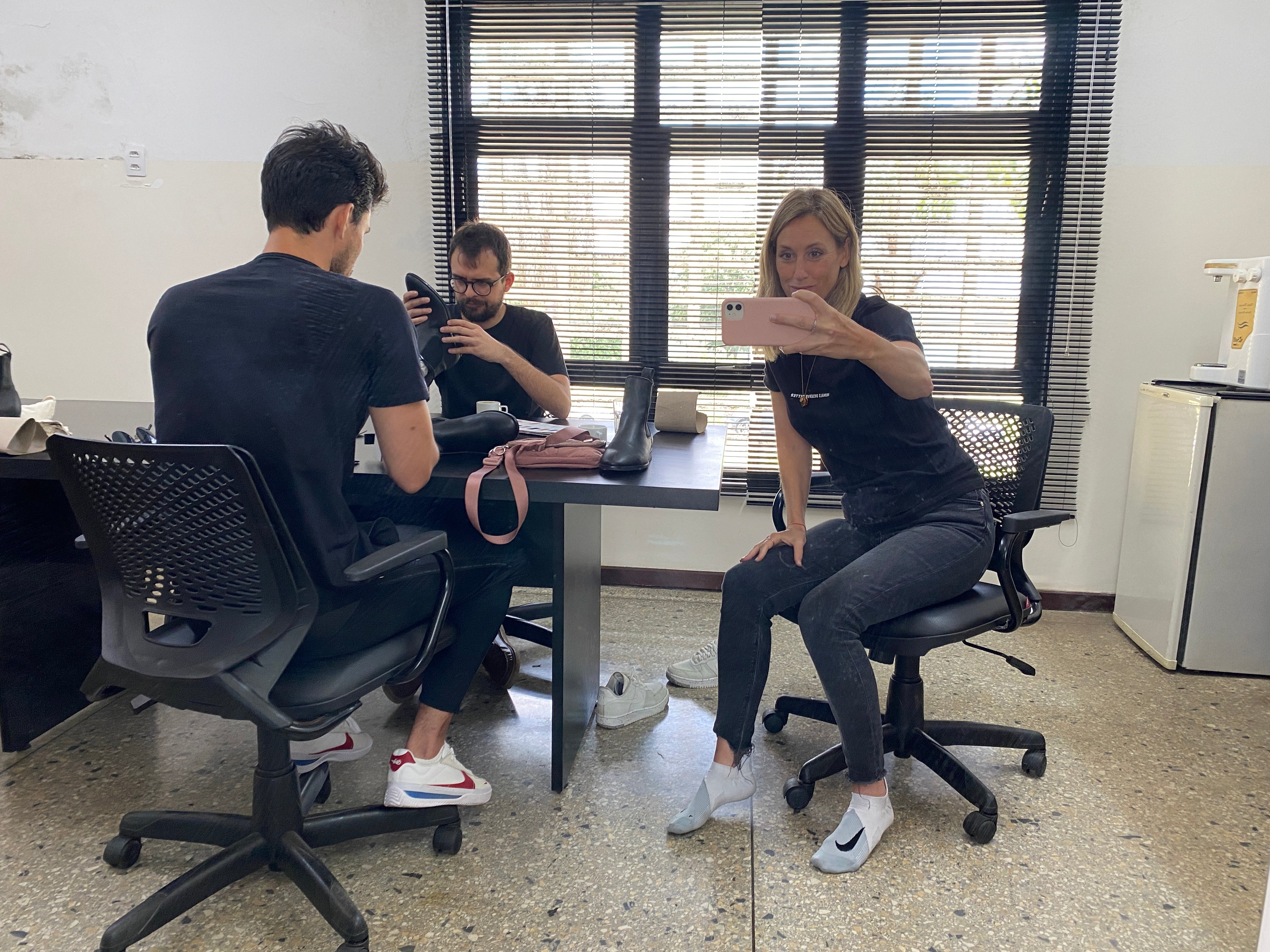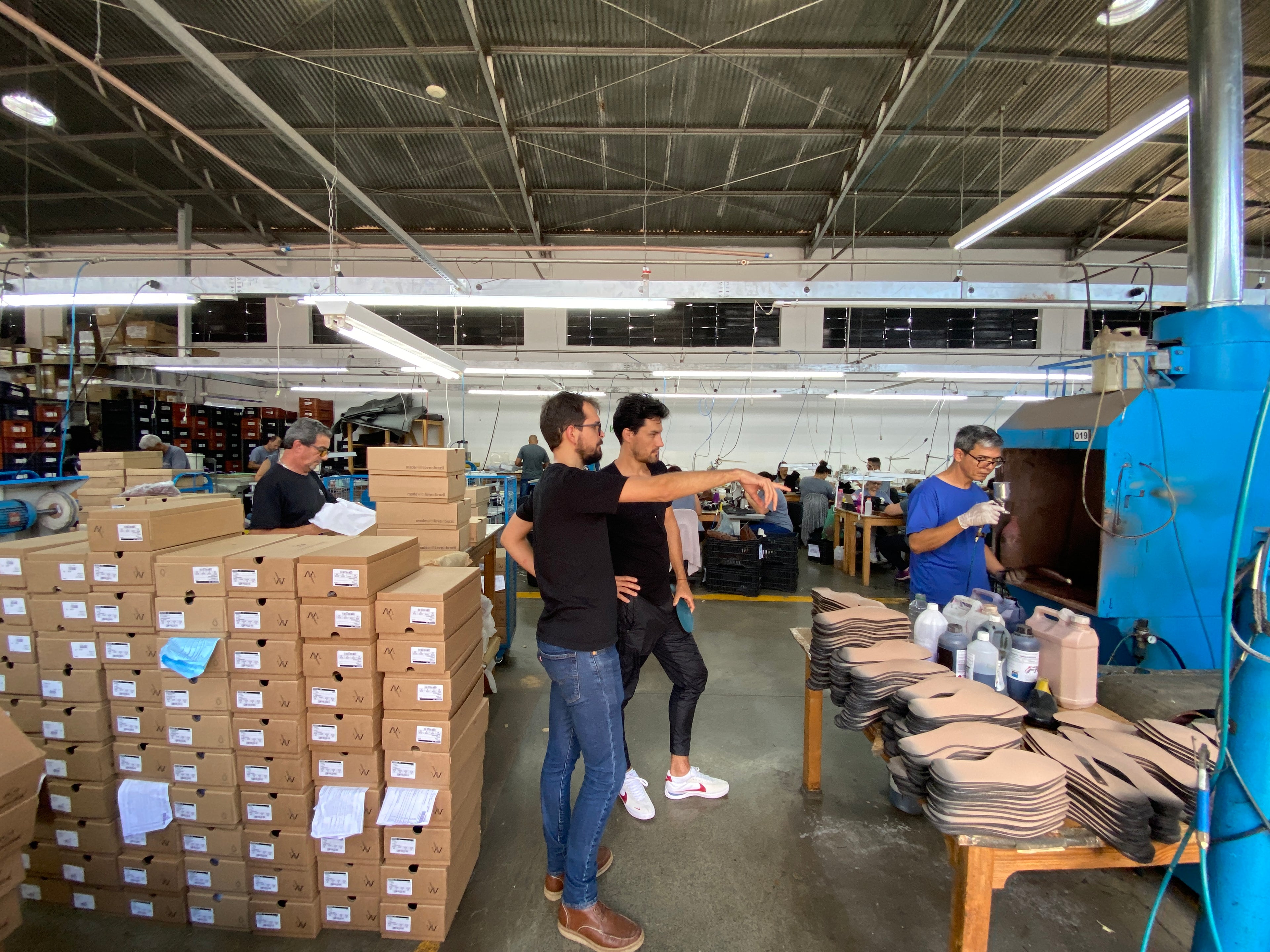Vegan leather hasn’t always had the best reputation. Synonymous with fast fashion, it’s been known for falling apart, scuffing easily, and just not standing up to the durability of the real thing. But, in recent years, vegan leather’s quality has skyrocketed and fashion brands from Gucci to Ganni have embraced it.
But, what is vegan leather?
Classic vegan leather is most often made from polyurethane (PU) or polyvinyl chloride (PVC). They’re often used interchangeably, but they’re different in terms of breathability and durability. PU leather is more breathable while PVC is more durable.
Although both of these leathers are animal-free and use fewer resources than cowhide leather, both are made from fossil fuel-derived plastics. This means that they’re not as sustainable as other types of vegan leather, because plastic doesn’t ever decompose. However, it’s worth noting that vegan leather’s impact is still up to a third less than that of conventional leather. Plus, it’s free from animal products.
On the plant side, more plants less plastic, there is development with Grape skins (VEGEA), Pineapple leather (Pinatex), Apple leather (AppleSkins), Corn leather and Cactus leather (Desserto).
Additionally, there is “mushroom leather,” mycelium leather made from the eponymous web-like root structure of mushrooms and fungi. In the wild, mycelium is a vital part of forest ecosystems, soaking up nutrients and aiding in the decomposition of organic matter. It can also be used to make meatless meat and vegan leather.
Deserto, a cactus leather company - material we are currently using - is leather-like material made from the leaves of the nopal cactus, a drought-resistant plant that thrives in arid regions.
The company takes sustainability very seriously. The plant is left intact when the leaves are harvested, so the nopal can continue to grow. It’s also native to the region where it’s grown, so it blends in with the ecosystem. In addition to that, the nopal cactus absorbs carbon dioxide and requires very little water to survive.
It’s flexible and breathable like cowhide leather and its uses are many. The brand has collaborated with a wide range of fashion brands and car makers, including H&M, Fossil, Givenchy, Adidas, Karl Lagerfeld, Mercedes-Benz, and BMW.
Is vegan leather better for the environment?
Multiple studies have definitively stated that a plant-based diet is better for the planet than an omnivorous one. But, is it the same with vegan leather?
Research shows that vegan leather isn’t as bad for the environment. According to a 2018 sustainability report from luxury goods giant Kering, its impact may be up to a third less than the real thing. The level of impact depends on what the vegan leather is made from.
Cattle production is one of the most environmentally destructive sectors in the global animal agriculture industry, responsible for about 65 percent of emissions. In Brazil, cattle ranching is a driving force behind Amazon rainforest deforestation.
See the full article to learn more:
https://vegnews.com/vegan-fashion-beauty/10-types-of-vegan-leather-coming-for-cowhide


